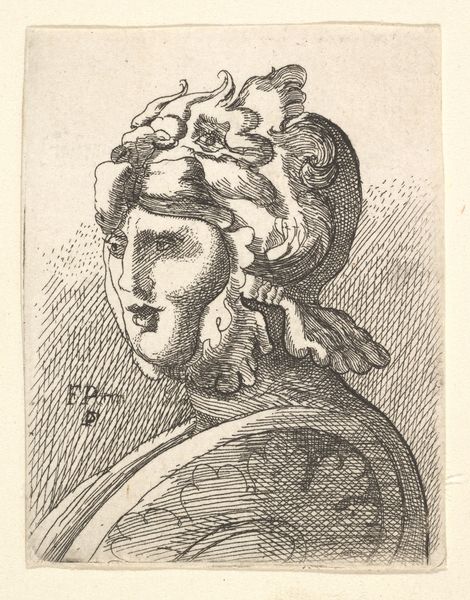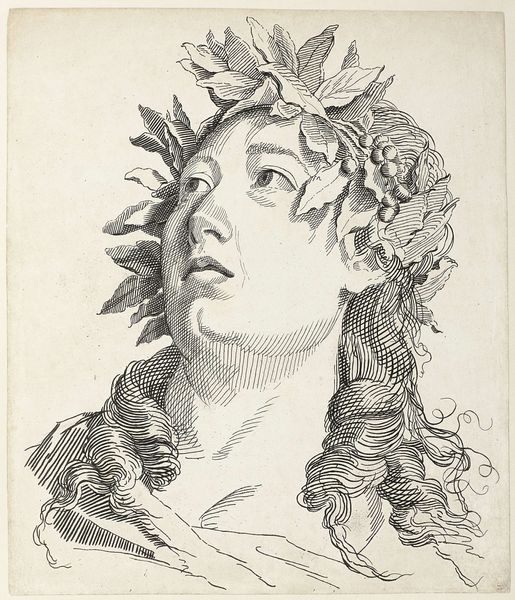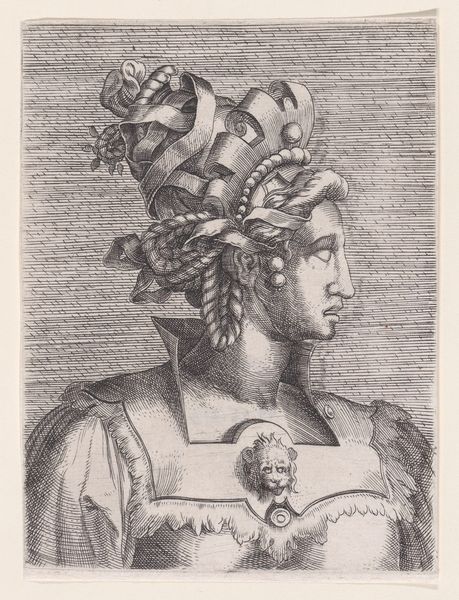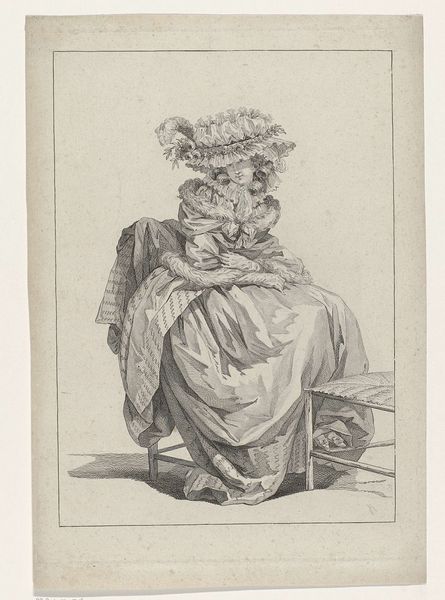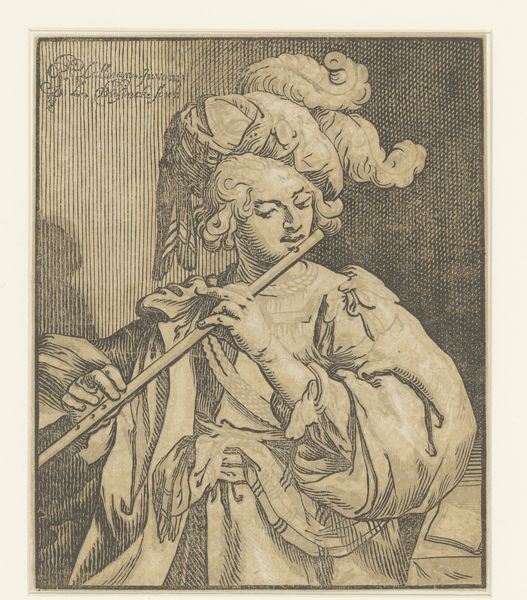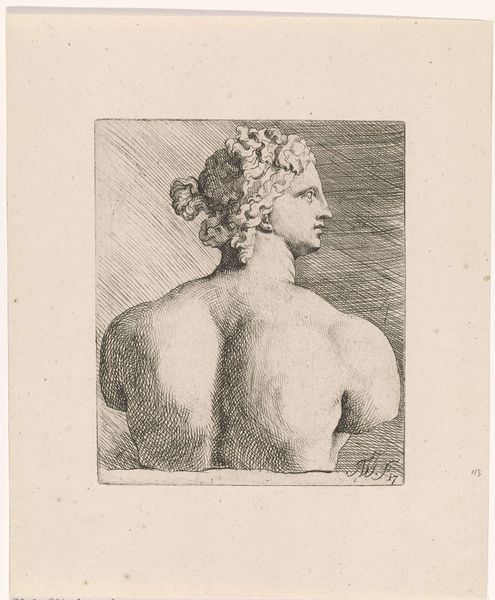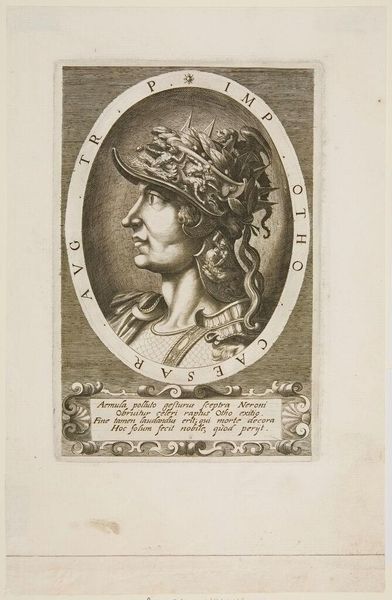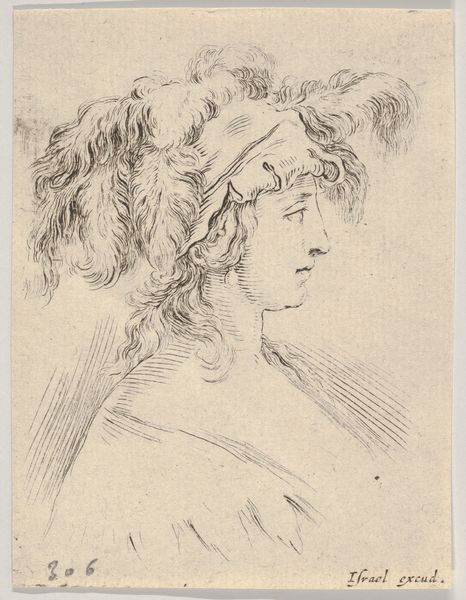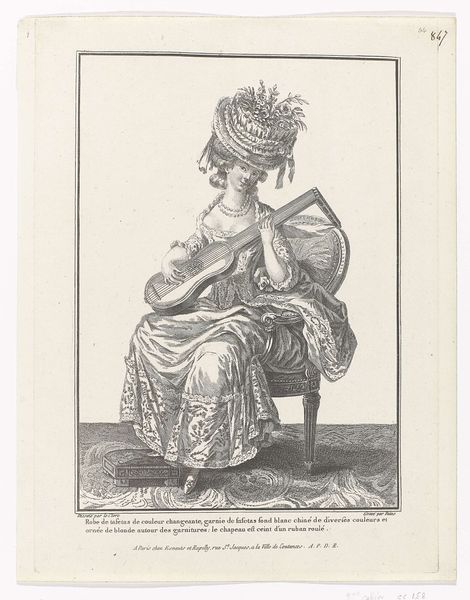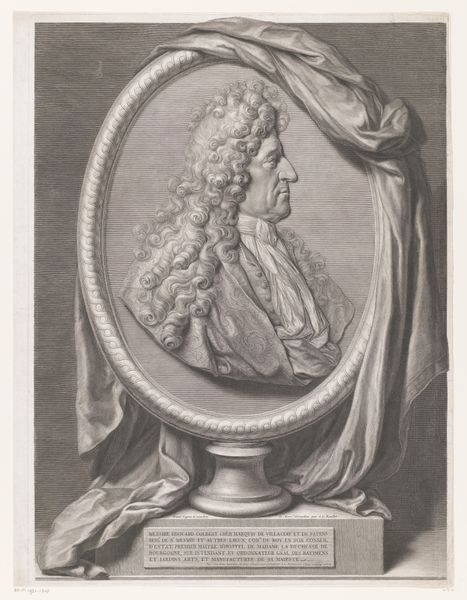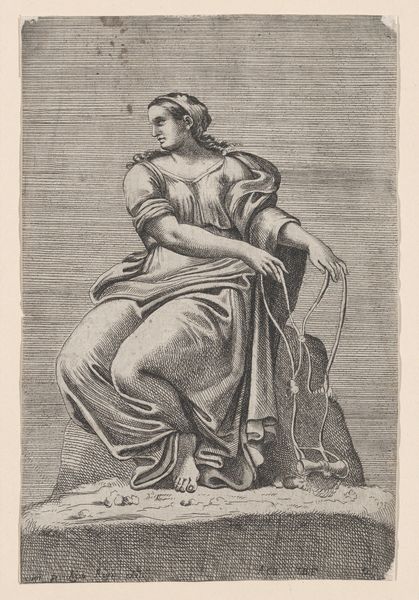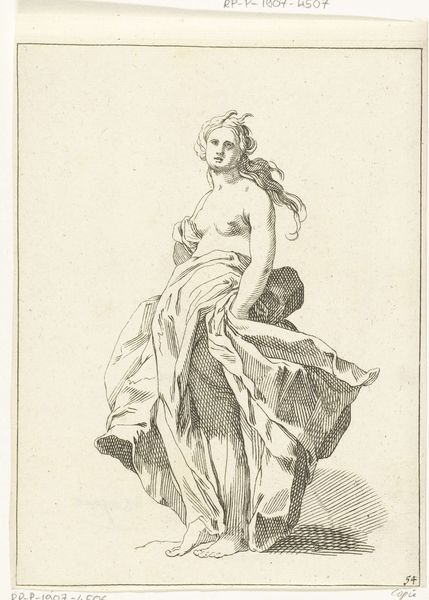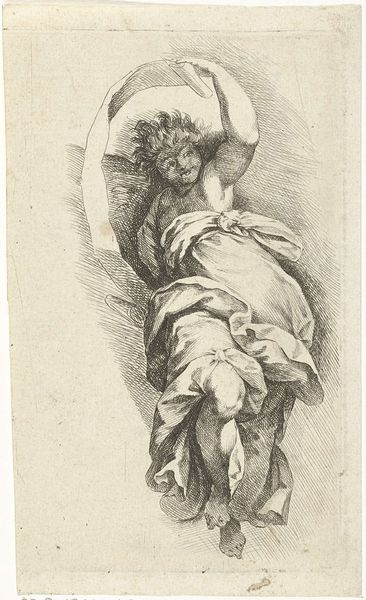
Dimensions: height 301 mm, width 223 mm
Copyright: Rijks Museum: Open Domain
Curator: This drawing by Louis Marin Bonnet, likely created before 1763, offers a striking "Buste van Minerva," currently held in the Rijksmuseum collection. Editor: Minerva appears contemplative, even melancholic. The softness of the pencil work, combined with the downcast gaze, evokes a quiet, internal mood. The dramatic helmet is somewhat muted by this affect, making the subject complex and compelling. Curator: Indeed. The very fact that this is rendered in pencil and print is noteworthy. The texture achieved replicates a chalk drawing—a deliberate invocation of academic artistic practices of the time, even while functioning as a reproductive print. The process involves several stages: drawing, engraving, and printing, each leaving its trace. Editor: Absolutely. Think about the division of labor inherent in printmaking during this period—the master who conceptualized the work, and the artisans involved in the mechanical reproduction. Consider the dissemination of such images: How did this bring classicism into domestic spaces and influence the cultural landscape? Also, the materiality—the paper itself, the quality of the pigments, tells us something about intended consumers. Curator: The print mimics the academic exercises through visual coding like the monochrome rendering. We could analyze the structure of the composition – the triangular shape of the bust, her head turned in contrapposto; even the lighting directs our eye to the key features. It emphasizes ideal form, order, and restraint – neoclassical qualities deeply rooted in Baroque aesthetics. Editor: Though the technique looks delicate, and it refers to older academic studies, its intent—to democratize classical ideals through mechanical reproduction, bringing them into ordinary life—represents something profoundly new for the time. Curator: A compelling intersection, truly. This print showcases both classical and nascent Enlightenment values. Editor: It reminds us how profoundly material the ideological can be.
Comments
No comments
Be the first to comment and join the conversation on the ultimate creative platform.
